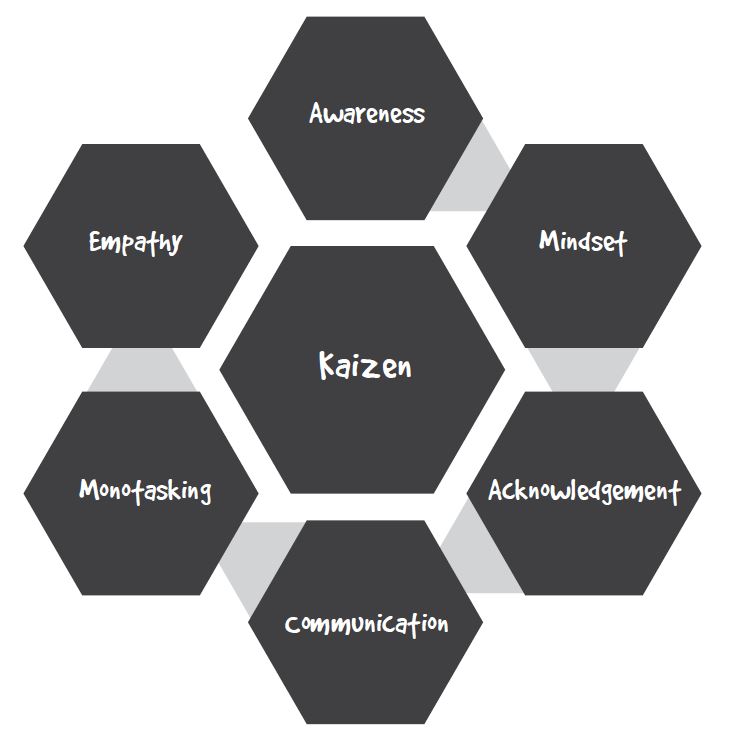 Identity is fluid if you’re open to evolving and changing. Everything we experience impacts our identity. Mine was once very rigid and self-serving, even when I had the best intentions. However, I realized this wasn’t a healthy path to continue on, and I wanted to shift to a serving state.
Identity is fluid if you’re open to evolving and changing. Everything we experience impacts our identity. Mine was once very rigid and self-serving, even when I had the best intentions. However, I realized this wasn’t a healthy path to continue on, and I wanted to shift to a serving state.How I was able to do this is the heart of my book, The In-Between: Life in the Micro. It focuses on the two unique environments—the micro and macro. The micro is the in-between consisting of all the little moments in life. The macro is the big picture, encompassing goals and milestones.
I spent most of my life only paying attention to the macro. It had devastating consequences until I was able to shift my identity.
Self-Serving vs. Serving States
Being self-serving is necessary for survival, physically or emotionally. We all have barriers that act as protectors. These are more present for those with a history of trauma. I was once in this category. I thought a “me against the world” philosophy was the best one to have. It allowed me to achieve some incredible goals, but my self-serving was often at the expense of others that I cared about.
A serving state steps up in the in-between. It’s empathy and action toward others. I had been working on this shift for some time. Witnessing a bad car accident was a key moment in realizing I’d accomplished this change.
In the moments of the crash, I did not think about how this would impact my day or plans. Instead, I removed my ego from the situation. I was someone who helped others and put their needs first. It was a feeling of purposefulness and connection.
Why Care About the Serving State?
Living a disconnected, macro-focused life may have its advantages. They could be monetary or food for your ego. It’s also a very lonely existence. Loneliness isn’t about isolation or lack of human interaction. Rather, it’s the feeling that no one else could possibly understand you. It becomes easy to serve only yourself.
A serving state is the opposite. You are open to others and give them your attention. This enables authentic connections. An identity that cares about the serving state provides opportunities to have meaningful micro-moments that make us better humans.
The Serving State and Actionable Awareness
Another concept in my book is actionable awareness. It’s the act of observing my thoughts, feelings, and actions in a situation and asking if they are serving me. From there, I want to act on this for myself and others. The action can change all this and be transformative.
In this feedback loop, I also remind myself that there is no failure, only feedback. I’m also listening to my gut and acting on it rather than sitting on the sidelines.
Moving to a serving state requires reflection and an embrace of the micro. You can learn more about how to do this by reading my book.
 Those who wish to be more present, empathetic, and emotionally healthy must have awareness. It’s two-fold. You need to have self-awareness and be able to be perceptive to others. Both are hard to accomplish. It starts by creating a goal of awareness.
Those who wish to be more present, empathetic, and emotionally healthy must have awareness. It’s two-fold. You need to have self-awareness and be able to be perceptive to others. Both are hard to accomplish. It starts by creating a goal of awareness. How engaged are your cybersecurity employees? It might not be something you even think about because you categorize these people as purely technical. They do a job based on tasks, and that’s the end of the story. However, that’s not the reality of cybersecurity operations. To thwart cyber-attacks, your team needs to improve
How engaged are your cybersecurity employees? It might not be something you even think about because you categorize these people as purely technical. They do a job based on tasks, and that’s the end of the story. However, that’s not the reality of cybersecurity operations. To thwart cyber-attacks, your team needs to improve 
 The advent of technology makes it easier for us to communicate with our staff and improve our business processes. However, it can also be a major risk to our organization: Hackers are lurking in every corner, waiting for the right time to steal information from us.
The advent of technology makes it easier for us to communicate with our staff and improve our business processes. However, it can also be a major risk to our organization: Hackers are lurking in every corner, waiting for the right time to steal information from us. Being an effective leader requires many things. Aside from understanding our own skills and capabilities, we need to exert time and effort to understand what others can do and how factors in the environment affect our ability to lead. We need to look at the bigger picture and change our perspective on things.
Being an effective leader requires many things. Aside from understanding our own skills and capabilities, we need to exert time and effort to understand what others can do and how factors in the environment affect our ability to lead. We need to look at the bigger picture and change our perspective on things.
